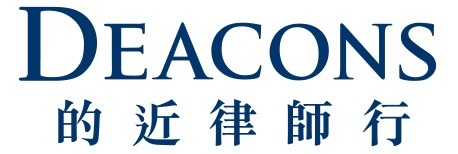Mave, the latest South Korean K-Pop girl band which has become a viral sensation, is the first virtual K-Pop group to really step up their presence into the metaverse including appearing in a webtoon series and video games to meet their fans. The group of four AI-generated singershave gained immense popularity, racking up nearly 20 million views since their debut on YouTube 2 months ago.
Mave is just an illustration of the potential of the metaverse and many businesses across different industries are already formulating strategies to protect their trade marks in the virtual world.
In Hong Kong, there has been a significant increase in trade mark applications with specifications relating to “metaverse”, “NFTs”, and “blockchain”. As of 12 April 2023, there are 3,392 trade marks with specifications containing “virtual reality”, 1,160 trade marks with specifications containing “augmented reality”, 1,727 trade marks with specifications containing “blockchain”, 1,028 trade marks with specifications containing “non-fungible token”, and 174 trade marks with specifications containing “metaverse”. These filings have not just been made by businesses already engaged in the metaverse, they include forward-planning famous brand owners and other businesses, taking pre-emptive steps to secure and protect their trade marks in the virtual world.
Now is the time for businesses to formulate a metaverse entry plan. Whilst it is encouraging that early cases such as the Metabirkin and Juventus have resulted in favourable decisions for brand owners based on traditional registrations, critical questions such as what constitutes use as a trade mark in the virtual world, and whether registrations for real-world goods/services can be enforced against virtual good/services infringements, remain uncertain. Brand owners should not assume that their existing registrations for “real world” goods/services will extend protection to “virtual” goods and services. The Hong Kong Intellectual Property Department has already confirmed, during the course of examining trade mark applications, that it will not cross-search virtual offerings (in Class 9) against classes pertaining to their physical counterparts (e.g. physical clothing in Class 25), and vice versa. Brand owners should act promptly to ensure their trade mark protection covers both real and virtual assets to avoid any gaps and risks.
Specifications will also need to be carefully crafted as the description will significantly impact the scope of protection. For example, “wearable electronics for metaverse use” is not the same as“virtual clothing software” – the former wording relates to physical wearable products, whereas the latter covers virtual clothing which does not physically exist.
Even if the physical goods are regarded as “similar” to virtual goods, it will then be necessary to show a “likelihood of confusion”, which would not be needed when enforcing against “identical” goods (i.e. if there is a clear registration for the virtual goods).
Metaverse-related goods and services may include downloadable virtual goods, virtual offerings, retail services featuring virtual goods, financial services involving digital tokens, online non-downloadable virtual goods and NFTs, appearing in various classes. With Class 9 and Class 35 being common classes for protecting metaverse-related goods and services, irrespective of brand owners’ core business industry, it is foreseeable that new trade mark applications in these classes will grow significantly, making these classes over-crowded and potentially blocking late entries.
Other classes may also be relevant depending on the nature of your business. For example, for Mave, virtual performances, concerts and competitions, and provision of online music and video content (non-downloadable) in Class 41 for entertainment services, would certainly be relevant.
Whilst internationally famous brands may be able to rely on additional legal protection as “well-known trade marks”, and the common law action for passing-off, it would be harder to bring a claim on based on these grounds due to the supporting evidence needed. It is likely to cost significantly more in time, effort and legal cost, than relying on a relevant metaverse-related trade mark registration.
In summary, even if your business does not yet have current plans to be “virtual”, you should proactively review your trade mark portfolio and consider filing for suitable protection in the virtual space, especially in relation to key trade marks. Taking action now will help protect against potential problems and infringements which will no doubt be much more costly and time consuming to deal with later.






